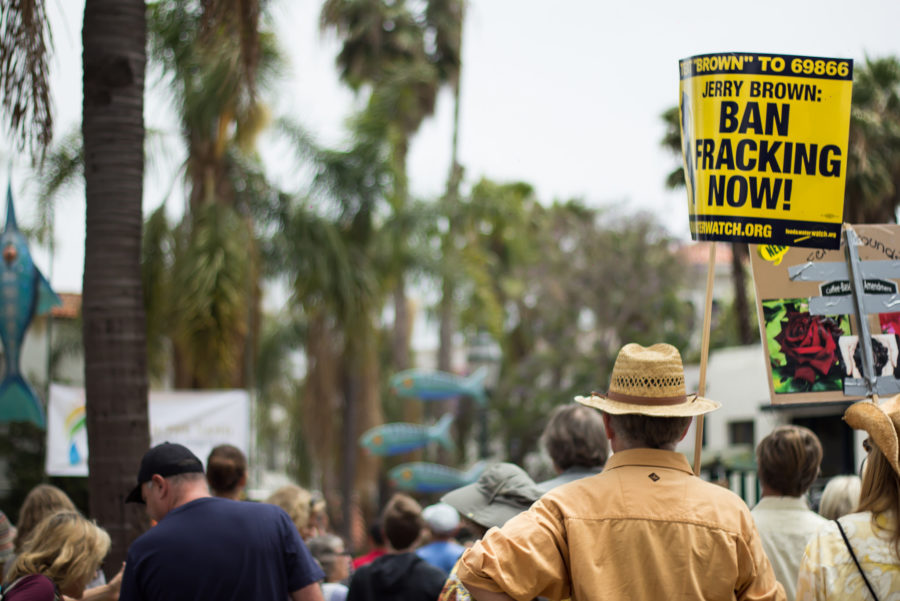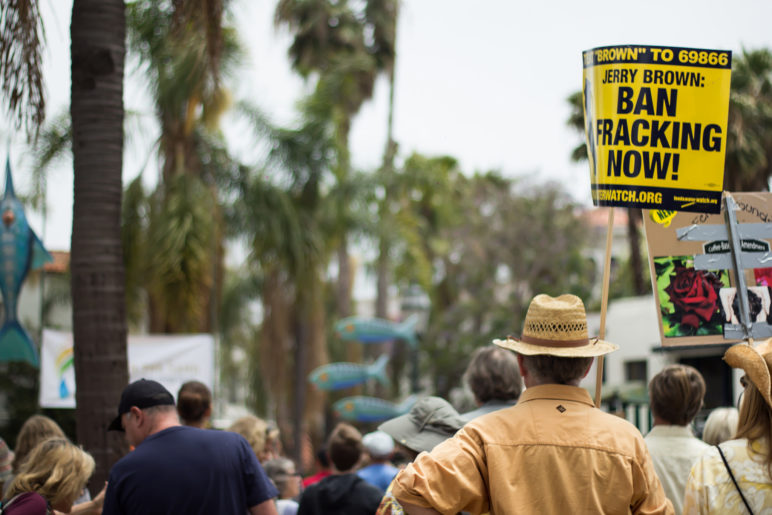Local communities have many of the tools they need to protect the health and safety of their residents.
As the Trump Administration looks to new federal energy policy, state and local authority, especially the power of regulating land use, will likely play an increasingly important role in protecting regions like the Northwest from the risks of coal, oil, and gas. Indeed, threatened by a tsunami of energy export projects, a number of cities and counties in the Northwest are defending themselves from new energy export projects by reforming their land use and development codes. It’s a strategy that has paid dividends for the Thin Green Line, Cascadia’s resistance to ill-conceived fossil fuel export schemes, which is likely to be increasingly important in the next few years.
Of course, the Northwest is not the only region where cities, counties, and states have tried to constrain the reckless advances of the fossil fuel industry. Local governments across the US are experimenting with a variety of opposition strategies to protect themselves from volatile oil trains, widespread fracking, and offshore oil drilling—strategies that we explore in this second installment. Although many of these localities have been confronted with legal challenges, it’s increasingly clear that local communities have many of the tools they need to protect the health and safety of their residents. They just may not know it yet.
Oil shipment regulations
In February 2016, the city of Benicia, California, denied the oil company Valero a key permit to build an oil train unloading facility. The company challenged Benicia’s decision on the grounds that the City based its permit denial in part on the anticipated environmental impacts of increased rail traffic to serve the site, a move that the company argued was in effect a regulation of Union Pacific’s railroad and was therefore preempted by federal law. Railroads are by law largely exempt from local and state oversight and are instead almost exclusively regulated under the authority of the federal government.
Several oil companies supported Valero’s petition to the US Surface Transportation Board (STB), the federal agency that resolves railroad service disputes. The companies asked the Board to conclude that the City had engaged in “impermissible indirect rail regulation.” The STB sided with Benicia, finding that federal law does not deny local governments land use permitting discretion over oil companies’ proposed oil train projects. Specifically, the STB provided guidance that because Valero is neither a “rail carrier” nor an agent of the rail carrier Union Pacific, Benicia’s ruling was not preempted by federal law and did not interfere unduly with the railroad’s common carrier operations.
Earlier, in September 2014, the STB had decided a related case in Grafton, Massachusetts, this one pertaining to a liquefied petroleum gas (LPG) rail-to-road transfer facility proposed in the city. In that case, the STB ruled against Grafton, stating that local requirements were preempted by federal law because the trans-loading operation at the site was explicitly a rail business. In the Benicia decision, however, the STB clarified that “localities retain their reserved police powers to protect the public health and safety so long as their actions do not discriminate against rail carriers or unreasonably burden interstate commerce.”
Many observers are keenly awaiting the outcome of a lawsuit over crude oil facilities in Portland, Maine. On July 21, 2014, the Portland City Council passed an ordinance amending the zoning code to prohibit the bulk loading of crude oil onto marine tanker vessels within city limits. The ordinance drafting committee noted in its recommendation that bulk oil loading operations are a type of land use that “has never been a traditional land use within the City” and that significantly impact “future development of the City’s waterfront, air quality, scenic ocean views, and land-use planning vision.” The measure passed 6 to 1.
In February 2015, Portland Pipe Line Corporation filed a lawsuit arguing that the ban was unconstitutional. The suit claimed the ordinance interferes with interstate trade, discriminates against Canadian interests, devalues the company’s pipeline, and is preempted by federal government authority. In February 2016, in a blow to the city, a judge declined to dismiss the corporation’s suit. The City has so far spent more than $748,000 defending the ordinance and expects that costs could reach $1 million before the matter is settled. A judge may resolve the case by summary judgement in early 2017, but if all the legal issues are not fully resolved on the summary judgement motions, it will likely proceed to trial.
Fracking bans
Hundreds of localities, mostly along the East Coast and in California, have acted to limit fracking through land-use provisions to varying degrees of success. Several state governments have even waded into the fray. Maryland has a temporary ban on fracking in place. So does New Jersey, where the legislature passed a permanent ban that was vetoed by Governor Chris Christie, who then issued an executive order establishing a one-year moratorium on fracking while state and federal agencies reviewed the issue. Most prominent is New York, where lawmakers passed a fracking ban in 2015, seven years after the state first put a moratorium on the practice. Meanwhile, North Carolina lifted its ban on fracking in 2014, though a federal judge put a hold on issuing permits for fracking while a legal challenge proceeds.
It’s at the local level, though, where efforts to ban fracking are most prolific and also most uncertain.
It’s at the local level, though, where efforts to ban fracking are most prolific and also most uncertain. For example, in November 2016, voters in Monterey County, California, passed Measure Z, a ballot initiative that prohibits new fracking operations and other high-intensity extraction techniques. It is the seventh county fracking ban in California, but the first in a county that’s a major oil producer. The measure’s reach is limited, though. It does not apply to offshore oil and gas operations, nor does it prohibit operations at existing oil and gas wells in the county, which number over 1,500. Moreover, an analysis by the Monterey County Council found the measure may actually allow replacement wells.
The County Council expressed uncertainty about whether the measure may be preempted by California state law, a concern based on the state’s exclusive right to regulate underground drilling operations (local governments can regulate only surface land uses in California) and argued that litigation would be likely. Indeed, just weeks after the measure passed, Aera Energy filed a lawsuit claiming that Measure Z is preempted by state law. Aera also claims that implementation of the measure would amount to a “taking” of property without just compensation, in violation of state and federal law, because it would result in the loss of its ability to produce oil in Monterey County. The legal action blocks the County from implementing part of Measure Z, but Monterey will proceed with implementing other components of the measure, and it plans to vigorously defend the initiative.
Also on the local level, in May 2016, Commissioners in Boulder County, Colorado, replaced a four-year-old moratorium on applications for oil and gas development in unincorporated areas of the county with a new, more durable ban on oil and gas operations. The new ban took note of a finding by Colorado’s Supreme Court that similar bans in nearby Fort Collins and Longmont were preempted by state law. One of the primary problems with the Fort Collins and Longmont resolutions was the duration of their moratoriums, and Boulder County was in a similar situation with its original temporary moratorium. First imposed in 2012, the county had extended and amended it several times, so that it was not set to expire until 2018. But the new Boulder County moratorium is part of a resolution that establishes a temporary ban while county staffers formulate amendments to county land use and zoning regulations that govern oil and gas development. The new resolution recommends that the commission continue the ban until safety concerns are better understood, although it notes that the County is preempted from a multi-year moratorium.
Overall, some state supreme courts have affirmed local zoning rights to prohibit fracking, while others have found that some or all local actions are preempted by state law. For example, the Pennsylvania Supreme Court in 2013 affirmed the right of municipalities to regulate fracking through local zoning laws. And in June 2014, the New York Court of Appeals, the highest state court, also decided that towns may ban or limit oil and gas production through zoning ordinances. On the other hand, in February 2015, the Supreme Court of Ohio, in a narrow and contentious 4-3 decision, ruled that cities and towns cannot enact fracking bans through their zoning laws, determining that under the state constitution, the sole and exclusive authority over oil and gas production resides with the state.
Other examples are murkier. In June 2016, the Louisiana Supreme Court declined to hear a case appealed from a lower court, which had ruled that the state must consider, but not abide by, local ordinances to ban fracking projects. In Colorado, oil and gas interests have gone on the offensive in what appears to be an effort to head off future local oil and gas prohibitions or limitations. Unsatisfied with the Colorado Supreme Court’s ruling to restrict standard regulation to the state, the industry successfully backed Amendment 71 in the November 2016 election, a law that makes it very difficult to change the state constitution.
Off-shore oil drilling bans
By the late 1980s, thirteen local governments in central and southern California, including Carlsbad (see B95) and San Diego (see SEC. 51.5), had an eclectic assortment of regulations on the books intended to block offshore drilling. San Diego passed an ordinance at the ballot that prohibited city employees from directly or indirectly authorizing the offshore oil and gas industry in any way. Carlsbad’s ordinance locks out oil industry facilities from city land by placing limits on land use for oil- and gas-processing plants, refineries, storage facilities, transfer stations, pipelines, warehouses, offices, tanker terminals, and helicopter pads, even though no such facilities existed in the city when the measure was passed.
In 1987, the Western Oil and Gas Association sued San Diego County and other local governments on the basis of federal preemption and the value of energy security. The judge in the case ruled against the oil industry, finding no basis to its claim that the local ordinances violated federal supremacy. The laws may cause additional expense and inconvenience, the court argued, but were not true obstacles.
Another tool in communities’ toolboxes
State and local land use authority may be a redoubt for communities against what appears to be a reckless advancement of coal, oil, and gas development by the new Trump Administration and the GOP-controlled Congress. Although there are some legal uncertainties, as well as a risk that some approaches are preempted by federal law, there is good reason to believe that zoning and related authorities will allow local governments—and the public they represent—to chart their own course toward a cleaner and safer future.














Don Steinke
Thanks Tarika, Eric, Deric
We need a lot people to step up at the local level and lead.
1. When your school board proposes a building bond measure, go there to advocate for conservation and renewables.
2. Show up at PUD meetings to promote the concept of “Choosing Clean Energy First” to meet demand for electric car charging.
3. Advocate for your city to do like Hoquiam WA, Vancouver WA, Portland OR, and Vancouver BC in terms of policies to transition away from fossil fuels. Portland banned new bulk fossil fuel storage facilities such as LNG storage. Vancouver BC has banned new gas-heat-dependent-buildings after 2030.
Tarika Powell
Thanks for your comment, Don.